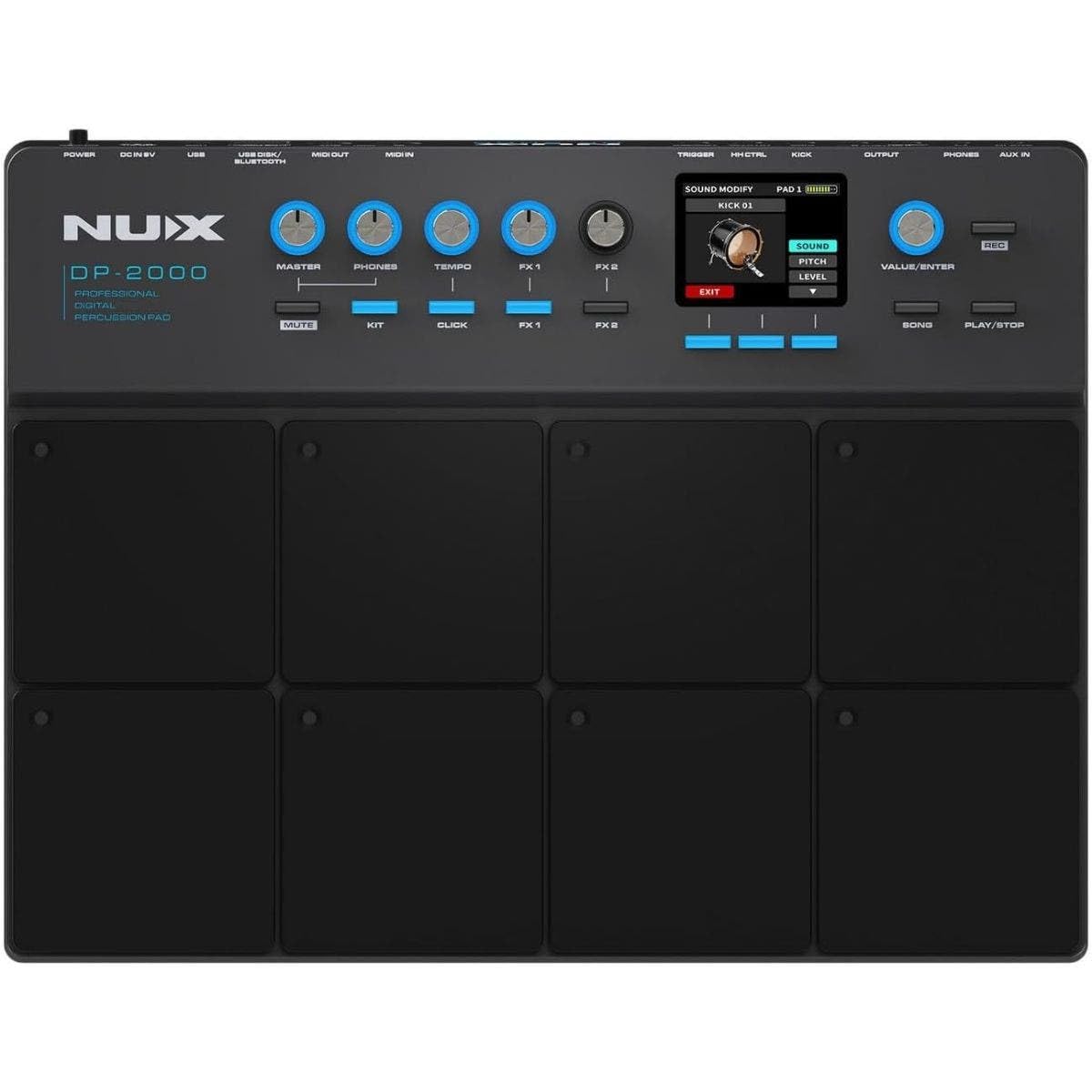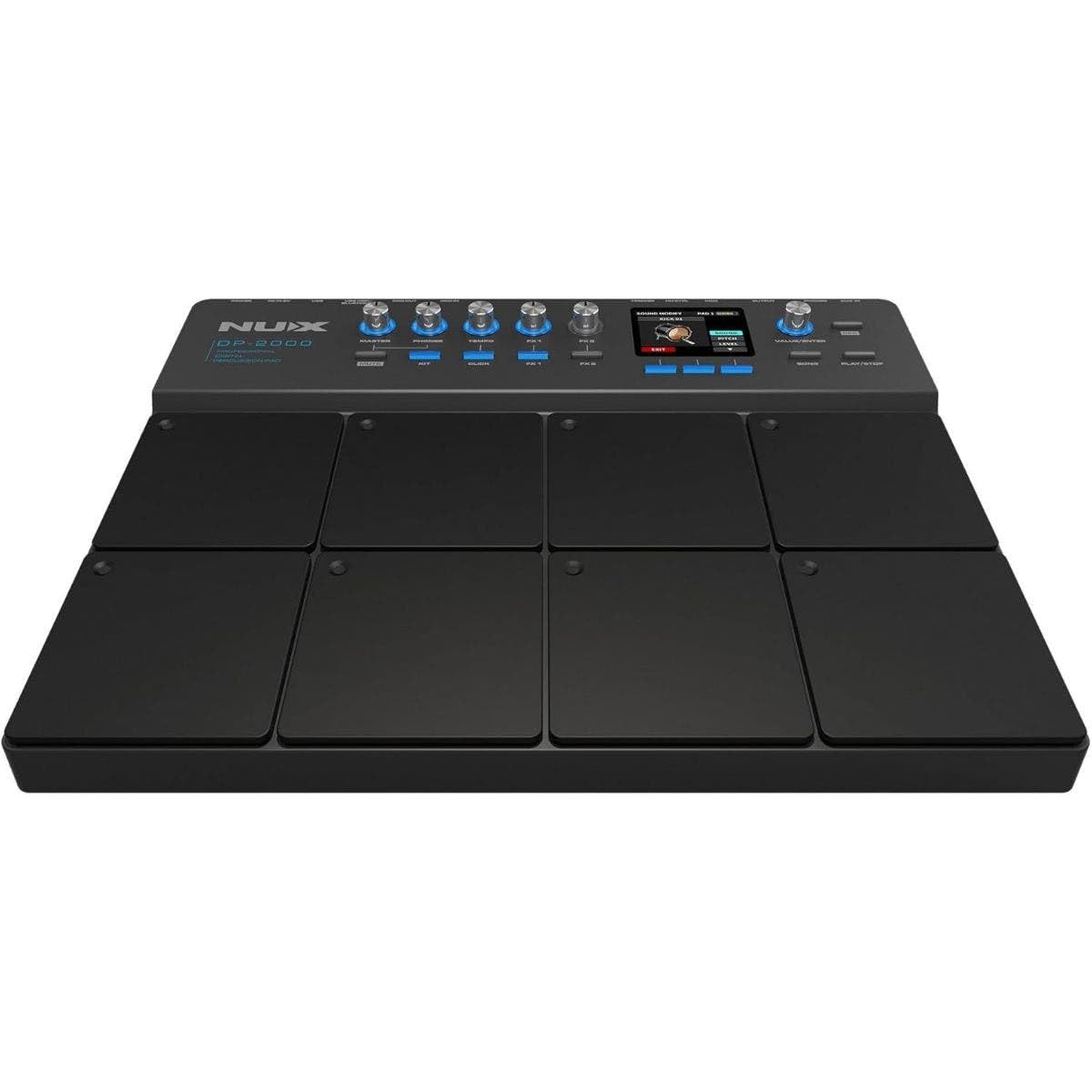Customer Services





🎶 Elevate Your Beat Game!
The NUX DP-2000 is an advanced percussion pad featuring 8 velocity-sensitive pads, a vibrant LED interface, and a user-friendly design. It offers 20 presets, a layer function for sound customization, and multiple connectivity options including USB and Bluetooth. With 6 onboard effects and the ability to import custom sounds, this pad is perfect for both professional musicians and hobbyists looking to enhance their drumming experience.
R**A
Another awesome product from NUX
Sound quality is top notch. I have no issues playing on this edrum kit and just so you know. I purchased a second unit. A must for drummers who have no space in their room to play and use a headphone to make it sound as if you're in a concert hall.Again thank you so much for the an outstanding product that surpasses my addiction to drums.
H**R
Well, that was frustrating.
I’ve spent about a week getting to grips with this multipad. How does it do? Let’s run down the essentials.Build quality:Quite good — the body is aluminum when most others use plastics of varying quality.Pad quality:The pads feel like thin silicone. Rebound is okay, but the pad feel is shallower and harder than on the Alesis, Roland, and Yamaha multipads. The triggering area is also much smaller than the pad surface; there’re multiple dead zones farther from the center of the pad. I suspect this was to eliminate crosstalk, but a larger strike area would’ve been welcome.Sound Quality: FX:The effects chain is intuitive and easy enough to use, but not quite as extensive as I’d like. There’s also not the flexibility to quickly toggle between different types of effects settings, which can be a pain if you’re playing something where your FX needs might change mid-song (or multiple times in a song). The one upshot is, because it’s an electronic kit, you can send your signal through a guitar effects pedal or multi-stomp and have more sound-shaping possibilities at your fingertips (or toes, as the case may be).Sound Quality: Patches:I’d rate the onboard sounds as fair to middling. Kicks and toms are generally the strong suit, with snares and cymbals being weaker links. Some of the non-kit percussion (bongos, opera gongs, and a couple of kits based on the 808 and 909) were surprisingly good, while a couple (like the cajon samples) left me scratching my head. Thanks to MIDI, however, you can play or trigger darn near anything, giving you plenty of options without having to even use the onboard sounds. But there’s a catch, as we’re about to see.Sensitivity:To begin with, sensitivity is set at 100, which is low (settings are on a 0-127 scale common to MIDI, but no matter how I adjusted I found it wasn't nearly sensitive enough. If, like me, you play with a lighter touch or want a bit more dynamic subtlety, you really have to whack it for your hits to register, which is distracting if you’re playing in a quiet setting (like providing backing in an otherwise unplugged setting). It’s also a pain because there’s no global setting; you have to set it pad-by-pad per kit, which is a time-consuming pain in the neck. I’d have preferred a quick-and-dirty global adjustment with the ability to tweak individual pads if/as needed.There’s something else worth noting that stems from the low sensitivity. Unlike the Yamaha DTM-12 or the Roland Handsonic series, you can’t really play this with your bare hands.Sampling:You can’t use the same number or length of samples here that you could use with a Roland SPD-SX, or even an Avatar HXW PD708. So you can get individual hits, or brief loops (there’s a 20-second limit), but if you want to trigger backing tracks, you’d have to MIDI out to a sampler or laptop and trigger from there, which cuts down on this multipad’s usefulness as a self-contained unit.Inputs:MIDI in, AUX in, and three controller/pad inputs. They’re mono ins, though, so you can’t run a pair of pads (or a two-zone snare pad, from what I can see) off those inputs unless you used a splitter to two of the available jacks and reassigned voices afterward (which is doable, but hardly an elegant way of doing things).Conclusion:When you put it all together, is it worth it? If you need a self-contained setup that’s inexpensive and capable of triggering full backing tracks, the Avatar looks like a better option on paper (especially since it has more pad inputs). The Yamaha’s getting long in the tooth, the Alesis has a lousy reputation for reliability, and while the Roland remains the industry standard, it’s spendy. So if you just need a little extra percussion in your setup, or if you have something to MIDI out to, it might be worthwhile, especially given the build quality, cost, and pretty good wired MIDI implementation.Would I do it again? In a word, probably not. It doesn’t have the dynamic control or range I prefer for my playing. What’s more, the self-contained kits aren’t good enough to make this a worthwhile purchase, because even if a similarly-priced competitor fell short, their considerably larger memory means you could easily find a sample library that filled in the gaps. This isn’t a terrible piece of gear, but it could’ve been so much better.
Trustpilot
3 weeks ago
3 weeks ago